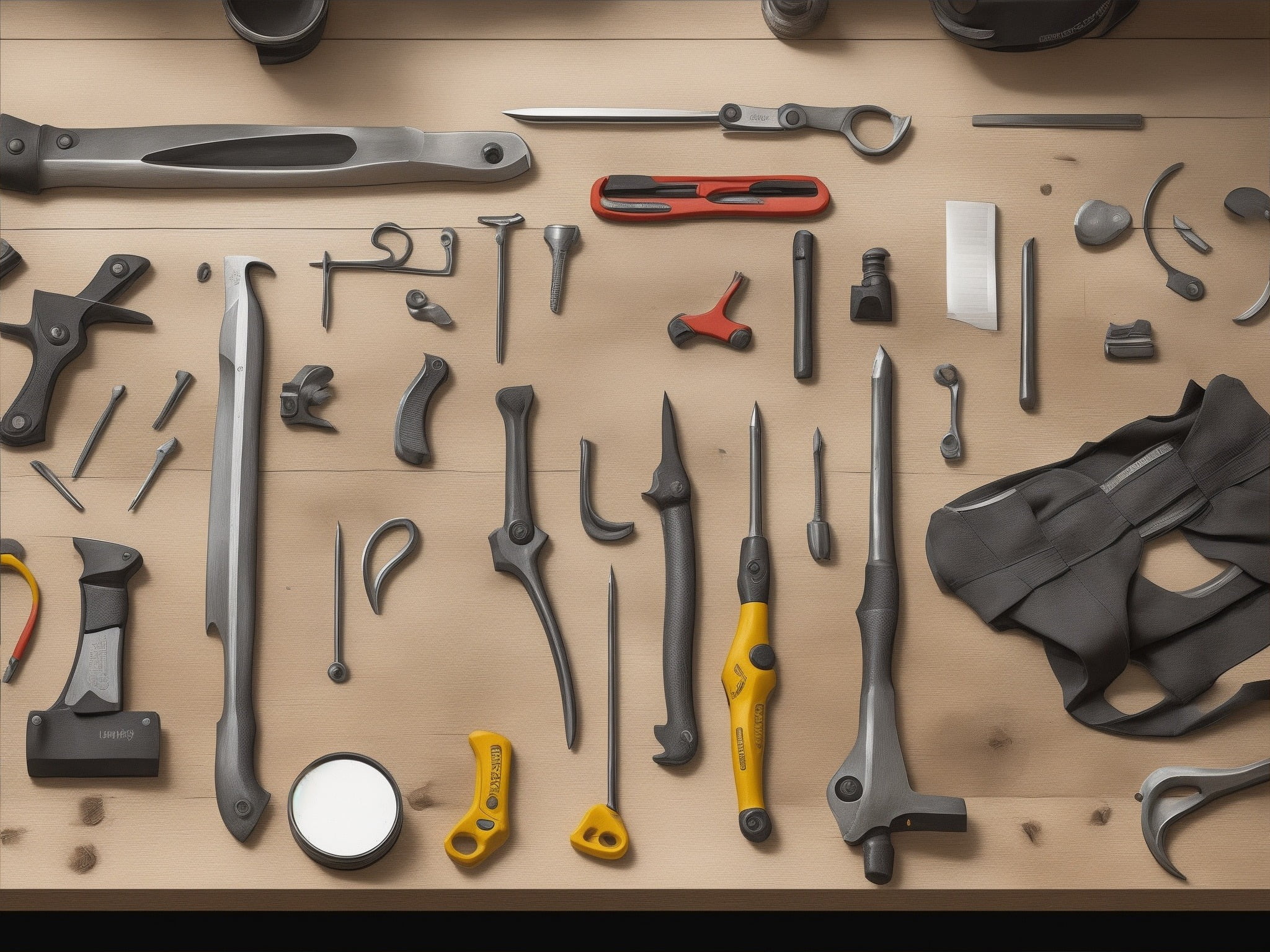Everyone loves the idea of saving some cash by tackling home repairs on their own. While it’s great to be self-reliant, DIY home repair, especially for beginners, can be tricky. But fear not! Whether you’ve just bought your first home or simply want to take on some minor home improvements, this guide offers some essential DIY home repair tips for beginners.

1. Know Your Limits 🚫
It’s essential to understand what you can and cannot do. If a job requires specialized skills or is potentially hazardous, consider hiring a professional.
Important Note: Always turn off the main power when working with electricity to prevent potential accidents.
2. Invest in Quality Tools 🛠️
Your tools can make or break your project. Invest in a basic set of high-quality tools. They’ll last longer and make the job easier.
| Essential Tools for Beginners | Use |
|---|---|
| Hammer 🔨 | For nails, fittings, and small demolitions |
| Tape Measure 📏 | Measuring spaces accurately |
| Screwdrivers (Flat & Phillips) 🔩 | Tightening or loosening screws |
| Adjustable Wrench 🔧 | Loosening and tightening bolts |
| Pliers 🔗 | Gripping, bending, or cutting wires |
3. Stay Safe ⛑️
Safety should be your top priority. Always wear safety glasses, gloves, and ear protection when necessary. Ensure your workspace is well-lit and free from potential hazards.
4. Research and Learn 📚
Thanks to the internet, there are countless resources available. From videos to how-to guides, take advantage of these resources and educate yourself before diving into a project.
5. Start Small 🏠
For many beginners, the enthusiasm to engage in DIY home repairs can sometimes overshadow the necessary foundational experiences. It’s easy to get inspired by extensive renovation shows or ambitious online tutorials, but it’s crucial to remember that every expert started with the basics. Starting with smaller, more manageable tasks allows you to learn, make mistakes without significant consequences, and steadily build confidence. Here’s how you can navigate your initial DIY journey:
a. Identify Simple Repairs
Before jumping into a wall demolition or complete room makeover, consider tasks like:
- Fixing a leaky faucet or replacing a showerhead 🚿
- Painting a single room or wall 🖌️
- Replacing old door knobs or cabinet handles 🚪
- Sealing small cracks or holes in walls 🧱
b. Practice Makes Perfect
Repeatedly practicing small tasks helps cement the foundational skills you’ll need for more extensive projects. For instance, before wallpapering an entire room, practice applying and smoothing wallpaper on a smaller section or a mock-up board.
Tip: Many local community centers or hardware stores offer workshops for beginners. These can be a great place to hone your skills and get hands-on experience.
c. Document Your Progress
Maintaining a journal or photo diary of your DIY tasks can be incredibly rewarding. By tracking your progress, you can visibly see how much you’ve improved, which can be a great motivation booster.
d. Celebrate Small Wins
Every completed task, no matter how minor, is a step forward. Don’t dismiss your achievements just because they seem trivial. Celebrate them! Whether it’s the perfectly painted wall without streaks or the newly installed shelf that’s level, each success adds to your DIY prowess.
e. Learn From Mistakes
Mistakes are inevitable, especially when starting out. Instead of feeling discouraged, treat them as valuable learning opportunities. If that shelf isn’t perfectly straight or the paint dripped in a few spots, assess what went wrong and keep those lessons in mind for next time.
Embarking on your DIY journey with smaller tasks creates a foundation of skills and confidence that you’ll draw upon as you tackle more ambitious projects. So, embrace the learning curve, celebrate every milestone, and remember that every expert was once a beginner too! 💪🏡
Tip: Fixing a leaky faucet or patching up a small hole can be a great starting point.
6. Plan Ahead 📆
Every successful DIY project starts with a well-thought-out plan. Planning not only ensures that you have all the materials and tools you need, but it also helps you understand the steps you need to take, anticipate potential challenges, and set realistic expectations. Here’s how you can effectively plan your home repair tasks:
a. Understand the Problem
Before diving in, make sure you’ve correctly identified the issue. Whether it’s a leak, a crack, or a malfunctioning appliance, understanding the root of the problem will guide your repair process and determine which materials and tools you’ll need.
b. Gather Materials and Tools
Once you’ve determined the problem, list down all the tools and materials you’ll need. Visit your local hardware store with this list in hand. Being well-prepared reduces the chances of unnecessary interruptions mid-repair because you forgot a crucial item.
Note: When buying materials, it might be wise to purchase a little extra, especially for things like paint or tiles, to ensure you have enough in case of mistakes or for future touch-ups.
c. Set a Timeline
Estimate how long the repair might take and then add some buffer time. This way, you won’t feel rushed. For more extensive repairs, breaking the task down into smaller steps and setting milestones can help make the process more manageable.
d. Prepare Your Workspace
Clear the area where you’ll be working. Remove any furniture, decorations, or other items that might be in the way. Lay down protective sheets if you’re painting or doing anything that might get messy.
e. Have a Backup Plan
Despite our best efforts, things don’t always go as planned. Maybe the repair is more complicated than you thought, or you discover another underlying issue. Having a backup plan means knowing when to call in a professional or being prepared to adapt your strategy if things go awry.
By meticulously planning ahead, you set yourself up for success and reduce the chances of encountering unexpected hurdles during your DIY home repair journey. Remember, preparation is key! 🗝️
7. Avoid Shortcut Methods 🚫
Although it might be tempting to find a quicker solution, shortcuts can lead to bigger problems in the long run. Always follow the recommended procedures.
8. Always Measure Twice 📏
This old adage is gold: “Measure twice, cut once.” This helps prevent wasting materials and ensures accuracy in your projects.
9. Seek Advice 💡
If you’re uncertain about something, ask! Whether it’s a friend, family member, or a professional, getting a second opinion can be invaluable.
10. Clean as You Go 🧹
Keep your workspace tidy. Not only does it make the process more enjoyable, but it also helps prevent accidents and misplacing tools.
In conclusion, DIY home repair for beginners doesn’t have to be a daunting task. With the right preparation, tools, and mindset, you can tackle many home repair projects on your own. Remember, it’s okay to seek help when needed, and most importantly, enjoy the process and the satisfaction of a job well done!
Originally posted 2023-08-29 02:22:15.







